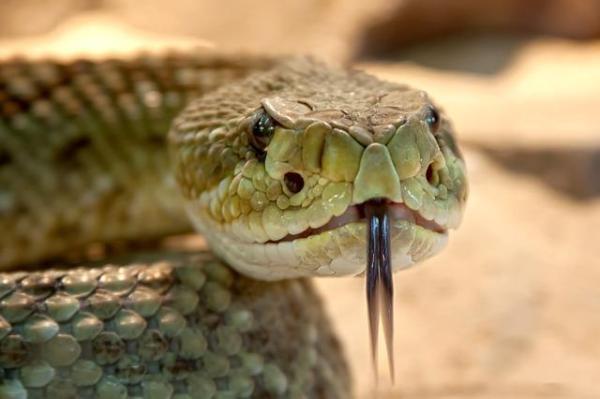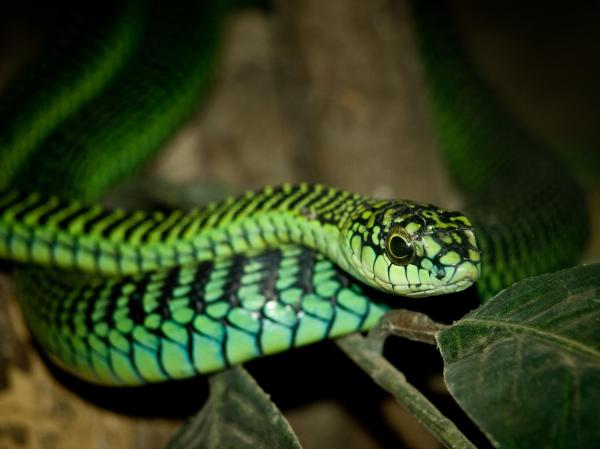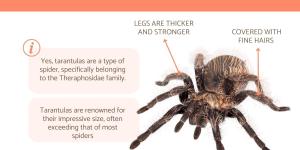What is the Difference Between a Colubrid and a Snake?


Knowledge of the animal kingdom means knowledge of our environment; human life is not conceivable without interaction with nature. Understanding nature helps us to better understand ourselves, our instincts and our processes. However, when we explore the mysteries of the animal kingdom, we might find confusing information that can even create more doubt.
For example, is a serpent the same as a snake? What about a colubrid? This is especially confusing if you're a Spanish speaker, since many snakes are generally referred to as "culebras." Are they even the same animals? Today at AnimalWised we'll explain what is the difference between a colubrid and a snake so that you know what both terms are referring to.
What is a snake?
To understand what is the difference between a colubrid and a snake, first you must have an understanding of the world of snakes. Snakes are vertebrate animals that belong to the reptile class, or Reptilia, like crocodiles, lizards, and turtles. While snakes don't have limbs, the scales on the underside of their body allow them to slither around.
There are many different types of snakes, which are arranged through the following scientifically implemented classification:
- Kingdom: Animalia (Animals)
- Phylum: Chordata (Vertebrates)
- Class: Reptilia (Reptiles)
- Order: Squamata (Reptiles with scales)
- Clade: Ophidia (Snakes and their extinct ancestors)
- Suborder: Serpentes (Modern snakes)
"Serpentes" is the scientific name for "snakes." Therefore, the term "snake" is general and refers to a suborder in the animal kingdom. It has different subcategories which include different families and species:
- Family
- Subfamily
- Genus
- Subgenus
- Species
- Subspecies
"Serpent", on the other hand, is a fancier name for snakes when they appear in art or mythology as symbols. The snake in the Garden of Eden, then, can be called a Serpent, but that term is not used for real-life, in-the-flesh snakes.
Interestingly, snakes have adapted to inhabit a diverse range of environments, from dense rainforests to arid deserts. Their ability to thrive in such varied habitats is largely due to their physiological adaptations. For example, some species have developed specialized heat-sensing organs to locate prey in the dark, while others have evolved unique camouflage to blend seamlessly into their surroundings. These remarkable adaptations highlight the evolutionary success of snakes as a group.

What is a colubrid?
When a Spanish speaker says "culebra," though, they're probably referring to an animal of the Colubridae family, that is, a colubrid. In fact, the majority of snakes belong to this family, which contains around 1800 species.
The Colubrid family consists of many harmless, medium-sized species such as the viperine water snake (Natrix maura) or the ladder snake (Rhinechis scalaris). Colubrids have a range of shared characteristics, such as their size. They are typically 20 to 30 centimeters (8 to 12 inches) long, not including the head, which is covered in large scales.
However, some colubrids are indeed poisonous - although their poison is not deadly - and have teeth at the back of the mouth. We should point out the boomslang (Dispholidus typus), could indeed kill a human being, making it one of the only species which pose such a threat. This particular colubrid can be seen in the picture below.
In addition to their diverse range of species, colubrids also exhibit a wide variety of behaviors. Some colubrids are highly arboreal, spending much of their time in trees, while others prefer an aquatic lifestyle. Additionally, certain colubrid species are known for their unique defense mechanisms, such as playing dead or emitting foul odors to deter predators. These fascinating behaviors further illustrate the adaptability and diversity found within the Colubridae family.

Then, what is a colubrid and what is a snake?
To fully clarify this common doubt, we can conclude that all colubrids are snakes, but not all snakes are colubrids. Snakes, or Serpentes, are a suborder of the animal kingdom, whilst colubrids are one of several families of existing snakes.
This is because the term "snake" is also shared with other families such as the Elapidae family (which includes cobras, coral snakes, mambas, and sea snakes) and the Viperidae family (which includes vipers and rattlesnakes).
Moreover, each of these families exhibits distinct characteristics and adaptations that set them apart from one another. For instance, members of the Elapidae family are known for their potent venom, which is used to subdue prey and deter threats. On the other hand, Viperidae snakes possess long, hinged fangs that allow them to deliver deep and effective bites. These differences underscore the incredible diversity present within the snake suborder.

Are you interested in the world of snakes?
If you want to learn more about these fascinating reptiles, stay with us. Are you thinking about adopting a coral snake as a pet? Don't think twice!
Owning a snake as a pet can be a rewarding experience, but it's important to understand the specific needs and requirements of the species you choose. Different snakes have varying habitat, diet, and care needs, so it's crucial to do thorough research before making a decision. Additionally, consider the long-term commitment involved, as some snakes can live for several decades in captivity.

If you want to read similar articles to What is the Difference Between a Colubrid and a Snake?, we recommend you visit our Facts about the animal kingdom category.









